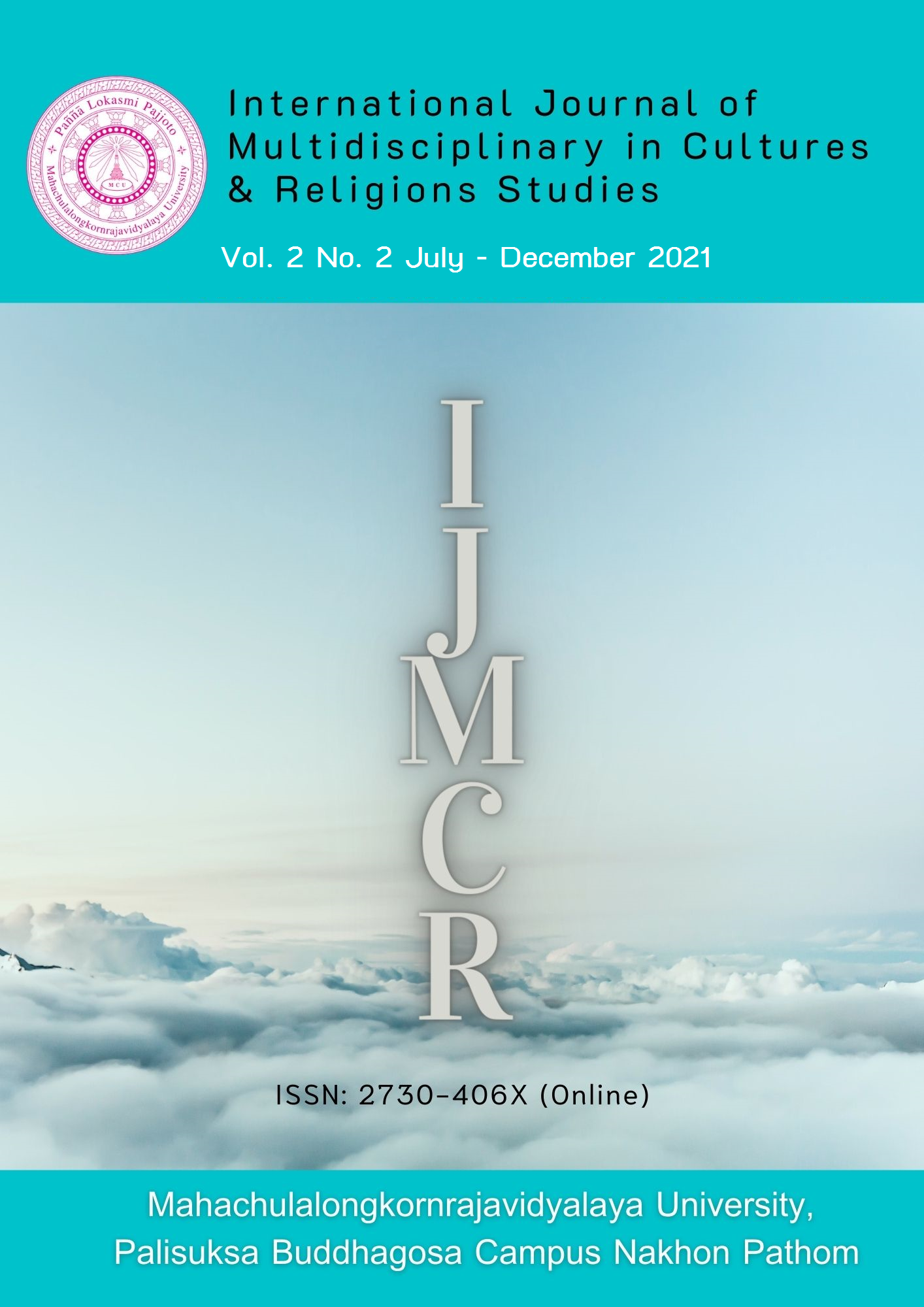Political Symbolic Communication of Students and People's Networks in the Reform of Thailand
Main Article Content
Abstract
The purpose of this research is to study the origination and analyze the operation form of political symbols of The Student and People Network for Thailand Reform (SNT) during 2013-2015. 2. To efficiently apply for the political movement of the Student and People Network for Thailand Reform (SNT). It is the quality research that determines the method of data collection by document analysis and in-depth interviews which using interviews form as tools and major informants are the mainstay of SNT and advisors who are operation team of SNT together with Student and People Network for Thailand Reform (SNT) and the person concerned in a political movement.
The research found that the symbolic politics of the Student and People Network for Thailand Reform from the past have expanded more from these contexts and factors 1. Problems of non-transparency of country management of the government 2. The protest of legislation 3. The enfranchisement of public meetings for political movement under the constitution of Kingdom of Thailand 1997 and 5. The use of technologies and new communication instruments in a political movement. In terms of using the political symbols form found that the Student and People Network for Thailand Reform create the language of political symbols as follows “Student” “People” Reform” “Fearless” “Love of Brotherhood and supporting” national flag, marching, canvas shoes, music, tear gas glasses and show barehand to the political moment meeting.
Article Details
References
Anekvieng, T. (2005). Analysis Discourse of Sonthi Limthongkul in the “Meungthai Weekly” TV Program. (Thesis of Master of Communication Arts). Chulalongkorn University.
Barthes, R. (1967). Elements of semiology. Translated from the French by Annette Lavers and Colin Smith. New York: Hill and Wang.
Barthes, R.. (1972). Mythologies. New York: Farrar, Straus & Giroux.
Boonmee, T. (2008). History Evolution of Souse a Road to Post-Modernist. Bangkok: Viphasa Publisher
Boonsuaykwan, N. (2009). Citizenship Political Analysis of Concept and Operating to Challenge the Power of Nominee System Political. Bangkok: Faculty of Economic, Chulalongkorn University.
Boonsuaykwan, R. (2014). Social Management: The Management of People Organization: The Management Social Organization: The Management of Non-Government Organization. Bangkok: National Political Science Association.
Charoensinolan, C. (1999). New form of Social Movement and Theoretical Implications to the democracy development. In Anuchart Puangsamlee and Krittaya Achawanijjakul (editor), Thai Society People Movement: Citizen Movement (pp. 62-63). Bangkok: The Thailand Research Fund.
Charoensinolan, C. (2002B). Semantics Structuralism after Structuralism with the Study of Politician Science. Bangkok: Constitution of Kingdom of Thailand 1997.
Cheunsiri, N. (1998). Government Policy to Resolve the Specific Group Benefits Problem: Study the Case of Assembly of Poor. (Thesis of Master of Political Science). Chulalongkorn University.
Chotivessil, P. (2010). Political Communication through the Cartoon Phuyaima and Toongmamaen by Chai Rachawat Study in the Political Crisis during 2006 - 2009. (Dissertation of Doctor Degree of Philosophy). Krirk University
Ferdinand, d. (1959). Course in General Linguistics. Edited by Charles Bally and Albert Sechehaye in Collaboration with Albert Riedliger.Translated.with an Introduction and notes by Wade Baskin. NewYork: McGrawHill.
Harnchana, P. (2012). Political Communication of Taksin Chinnawat during 2006-2009. (Thesis of Master Degree of Communication Arts). Chulalongkorn University.
Karnjanawises, Y. (2004). Process of Meaning Creation and Role of Discourse “Nayok Taksin Taking to People” Program. (Thesis of Master of Communication Arts). Chulalongkorn University.
Keawtep, K. (1998). The Study of Mass Media by Critical Theory: Concept and Sample of research. Bangkok: Picture Prints.
Keawtep, K. (2009). Media Analysis: Concept and Technic (Type Time 4). Bangkok: Picture Prints.
Krischaroen, J. (2010). The Analysis of discourse of The People’s Alliance for Democracy of People Power Government (May-December 2008). (Dissertation of Doctor of Communication Arts). Chulalongkorn University.
Nanthawarophas, N. (2014). Political Communication: Theory and Application. Bangkok: Mass Media.
Phichalai, P. (2012). Political Struggle of People Alliance for Democracy in the Age of Taksin Chinnawat Government. (Dissertation of Doctor Degree of Philosophy). Chulalongkorn University.
Pongwilaisrap, K. (2008). Communication tactics for persuasion of People’s Alliance for Democracy. (Thesis of Master of Communication Arts). Chulalongkorn University.
Prasertkul, S. (2005). The people’s politic in Thai Democracy. Bangkok: News Agency Vipasa.
Somchai, K. (2008). The Political Communication in the Crisis During 2006: The Case Study of People’s Alliance for Democracy. (Dissertation of Doctor of Philosophy Program). Krirk University.
Tilly, C. (1993). Contentious repertoires in Great Britain, 1758-1834. Social Science History, 17(2), 253-280.
Vatatiyakorn, S. (2010). Symbolic Products In The Area That Have Political Movement: Study about the Case Product Market of People’s Alliance for Democracy. (Thesis of Master Degree of Social Science). Chulalongkorn University.


